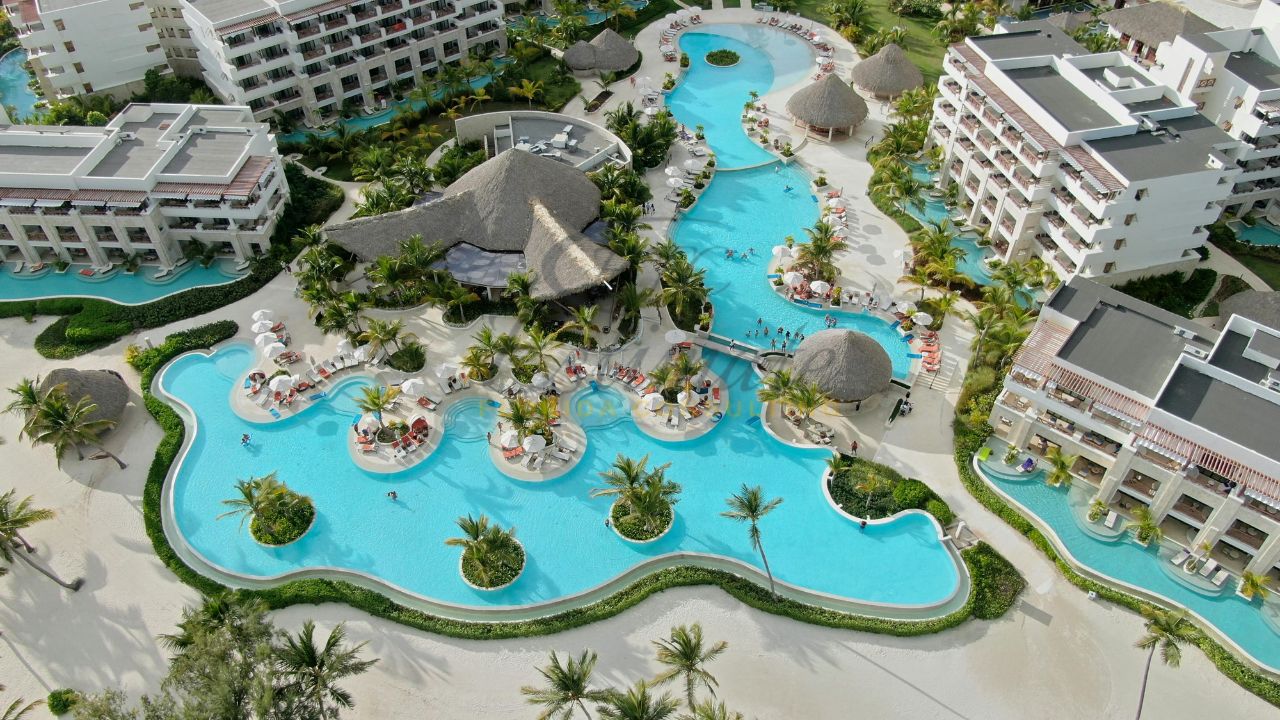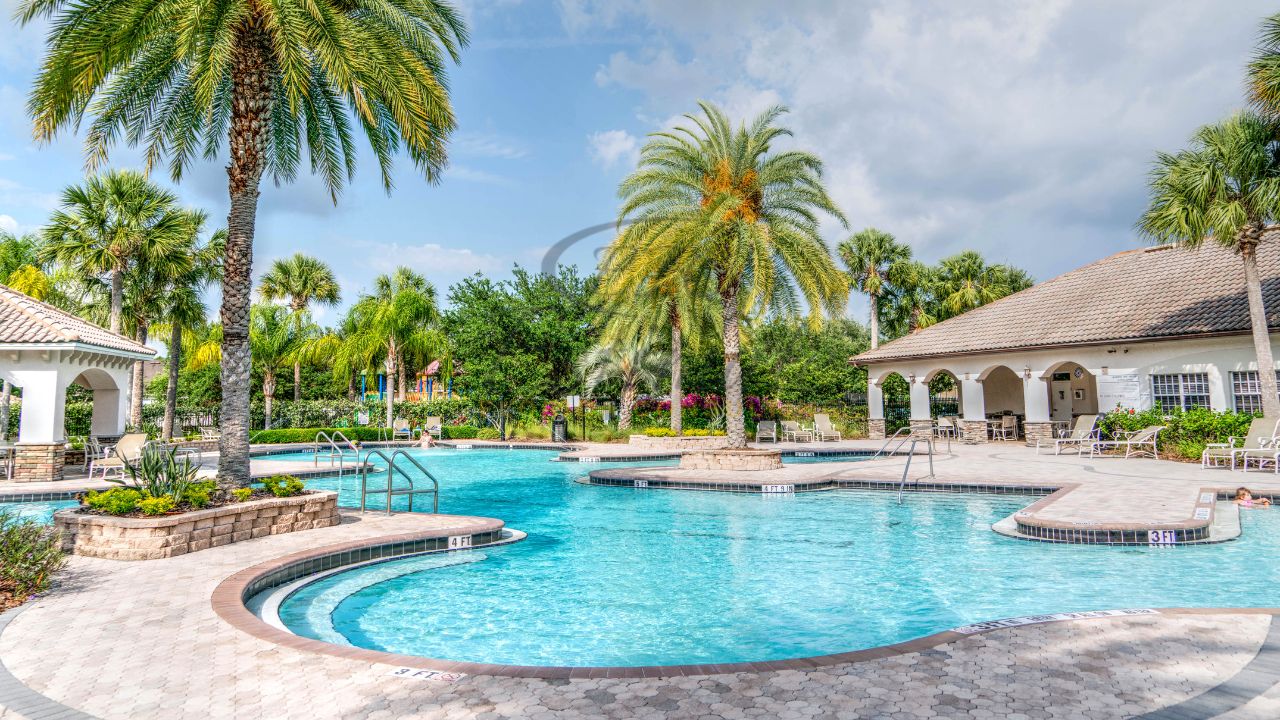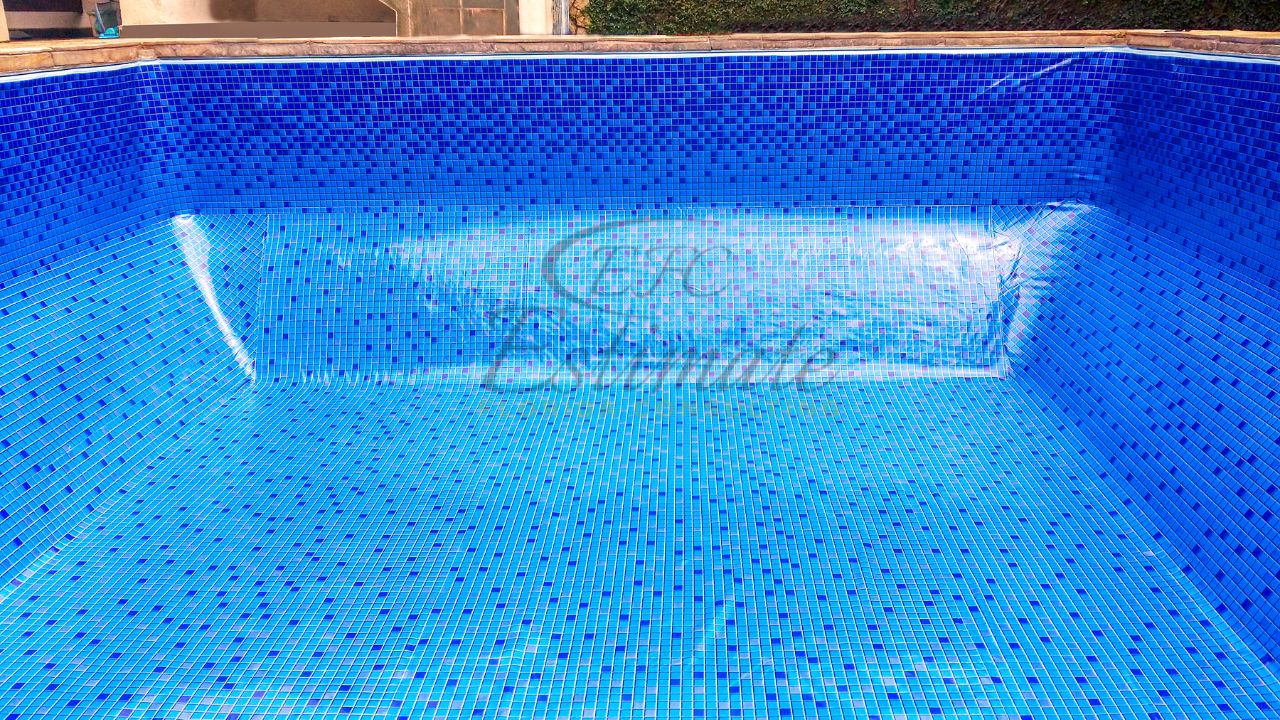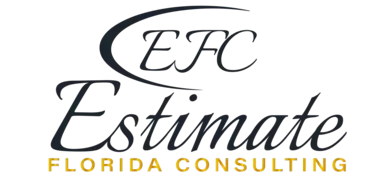Palm Beach County Pool Cost Guide 2025
Palm Beach County sunshine makes a backyard pool feel essential. Yet in 2025, concrete, fiberglass, and vinyl builds can rival a luxury-car payment.
That big price tag leaves homeowners asking the same question: What will my pool really cost, and where do the surprise fees lurk? We’ve dug through contractor quotes, county codes, and financing fine print to assemble a no-surprises roadmap.
Use this guide to set a clear budget and dive into your future pool with total confidence.

Palm Beach Pool Costs At A Glance
The table below lists turnkey 2025 prices for a typical 12 × 24-foot backyard build in Palm Beach County, plus two line-item costs you will pay no matter which pool you choose.
Pool Type | 2025 Price Range | Why Prices Vary |
Concrete (gunite) | $65,000–$100,000+ | Unlimited shapes, premium finishes, longest build time |
Fiberglass | $52,000–$95,000 | Factory-molded shell, quick set, limited by truck width |
Vinyl liner | $40,000–$75,000 | Lowest upfront spend, linear swap every 7–12 years |
Building permits | $450–$1,800 | County building, electrical, and gas permits |
Hurricane-code reinforcements | +8–12 % | Wind-rated cages and footings for 150 mph code |
A compact concrete rectangle usually lands near the low end, while a free-form design with a spa and LED lighting can exceed six figures. Layer permit fees and hurricane upgrades onto the builder’s base quote now, and your final invoice will match your expectations later.
Permits And Inspections
Palm Beach County will not let you break ground until every permit is approved. Most homeowners spend $500–$800 on pool permits, covering zoning review, structural plans, and separate electrical or plumbing sign-offs. Cities such as Royal Palm Beach issue permits in 7–10 business days when plans are complete, although waits grow after major storms.
Skip or fail an inspection, and the county adds a re-inspection fee. Ask your builder for a written permit calendar that lists each checkpoint (excavation, steel, gunite, deck, final) and the fee for each step. When those costs appear on your invoice, they are planned, not surprise charges that derail your budget.
Hurricane Standards
Palm Beach County falls within Florida’s 150 mph wind zone under Florida Building Code §1622 for screen enclosures. Your pool cage, therefore, needs thicker aluminum beams, hurricane-rated fasteners, and concrete footings engineered for uplift.
HomeGuide’s 2023 cost survey shows these upgrades add 8 to 12% to a typical project, or about $4,000 to $10,000 on an $80,000 pool. Skip the spec, and you risk more than repairs. Insurers can void claims when an enclosure fails inspection, and airborne panels can damage neighboring homes.
Ask your builder to itemize “wind-load engineering” and “hurricane hardware” on the quote so the surcharge is clear before you sign. With Palm Beach County real estate booming, compare pool-equipped listings to gauge resale expectations in your area.
Soil Tests And Groundwater
Under Palm Beach County’s sugar-sand lawns, soil can shift from loose sand to dense marl within a few feet. A licensed geotechnical engineer will drill core samples and flag any soft pockets or organics. Full geotechnical testing runs $1,000 to $5,000, and most homeowners spend about $2,700.
If your report indicates weak soil, crews will add compacted fill or wider footings, typically costing $2,000 to $4,000 for a mid-size pool. High groundwater creates a separate expense because well-point pumps must run constantly to keep the dig dry. Rental plus fuel usually costs $500 to $2,000 each week, and a shallow project in South Florida averages $4,000 to $10,000 before concrete is poured.
Include these subsurface costs in your quote request now, and you will avoid emergency add-ons later.
Site Prep And Access
Excavation prices assume a wide, drive-through path. Anything narrower adds labor and equipment fees. HomeAdvisor’s 2025 data shows standard pool excavation costs $500 to $3,020 for a 12 × 24-foot dig. When side yards are too tight or power lines block boom trucks, builders switch to compact machinery, conveyor belts, or, in the most limited spaces, hand digging. Tight-access surcharges in South Florida range from $1,500 to $10,000, depending on lost hours and specialty gear.
You can keep the project on heavy equipment by clearing a six- to eight-foot path before crews arrive. Remove one fence panel, trim hedges, and ask a neighbor for temporary gate use. Each extra foot saves shovel time and protects your budget.
Safety Barriers And Enclosures
Florida law requires every new pool to have a barrier at least 4 feet high. Palm Beach inspectors verify this rule before granting final occupancy, so build the cost into your plan now.
- Option 1: Screen enclosure – A screened aluminum cage supplies shade, bug control, and code compliance in one structure. HomeGuide’s 2023 survey lists screen enclosures at $5 to $15 per square foot, or $4,000 to $14,000 for a 12 × 24-foot pool with a small deck. Coastal wind-load upgrades add about 30% to multistory cages.
- Option 2: Mesh Safety Fence – A removable mesh fence meets the four-foot rule for less money. Current prices run $10 to $30 per linear foot installed. For a typical 100-linear-foot perimeter, budget $1,000 to $3,000.
Add the chosen barrier to your permit plans. Without it, the county will withhold your completion certificate, and your new pool will stay officially closed.
Electrical And Plumbing Hookups
Power and water lines turn the shell into a pool you can enjoy. In Palm Beach County, basic plumbing and electrical hookups cost $3,000–$5,000 for a midsize inground pool. That price covers bonded grounding, a sub-panel by the pump pad, and PVC runs from the skimmer to the returns.
If your main service panel lacks capacity, budget for an upgrade now. HomeGuide lists 200-amp upgrades at $1,300–$2,500 and 400-amp service at $2,000–$4,000. Adding capacity during construction avoids tearing into finished landscaping later.
Ask your builder to run one empty conduit and a spare water stub in the trench. This $200 foresight lets you install automation, extra lights, or a gas heater later without breaking concrete.
Upgraded Features
Base quotes rarely include the extras that turn a simple pool into a resort. Below, you will find 2025 price ranges for Palm Beach County, pulled from HomeGuide and Angi surveys.
- Heat-pump heater: $2,000–$6,000 installed
- Integrated spill-over spa: $15,000–$20,000 added to the pool build, covering raised walls, extra plumbing, and a larger pump
- Water features: A sheet fall or rock waterfall starts around $2,000 and can reach about $8,800, depending on size and materials
- Pool automation: A Wi-Fi controller plus variable-speed pump costs $1,500–$3,500 and lets you schedule lights, heating, and water features from your phone
These upgrades are optional, yet adding them later often costs twice as much because crews need to drain the pool and cut through finished decking. Decide now, build once, and enjoy sooner.

Decking And Landscaping
Your shell may be the showpiece, but the deck makes the space usable all year. HomeGuide’s 2025 survey reports Florida pool decks cost $25 to $50 per square foot, depending on material and pattern. Upgrade from brushed concrete to 800 square feet of travertine, and the bill lands around $20,000 to $40,000.
Softscape and lighting come next. Sod, three queen palms, and low-voltage uplights usually add $7,000 to $15,000 in South Florida, with landscape lighting alone averaging $4,100 statewide.
If cash flow is tight, install coping and the first ring of pavers now, then add plants and lights next spring. Run drip-line sleeves before the stone sets; tearing up travertine later costs far more than a few lengths of PVC today.
Maintenance Equipment And Start-Up
After the final inspection, you will still need a few essentials to keep the water crystal clear.
- Start-up chemicals: Pool-supply kits cost $25 to $100 and include shock, algaecide, and clarifier for the first month. Many builders include one kit, so confirm before you sign.
- Robotic cleaner: Angi’s 2025 data shows $500 to $1,500 for a wall-climbing robot, with most homeowners spending about $900. Choose during construction so the robot is ready for leaf season.
- Hurricane-rated safety cover: A mesh or solid pin-down cover runs $1,000 to $3,600 installed, depending on span and anchor style. It protects plaster and satisfies many insurance riders.
Buying these items during construction avoids retail markups and lets crews anchor hardware before the deck sets, saving you time and cash later.
Ongoing Ownership Costs
After the final inspection, four ongoing expenses keep your pool running year-round.
- Chemicals and service: HomeGuide lists monthly pool maintenance at $80 to $150 for full service, or $30 to $95 if you handle the brushing and skimming yourself. Concrete pools sit at the high end because plaster absorbs more sanitizer.
- Electricity: A variable-speed pump adds $30 to $50 per month; single-speed models can reach $75 to $150. Run the pump during off-peak hours and keep filters clean to stay near the low end.
- Insurance: The average Florida homeowner already pays about $191 per month for a $300,000 dwelling policy. Carriers typically add $15 to $40 per month in liability premiums when a pool is noted, and screened enclosures often require a separate wind rider.
- Repairs and resurfacing: Plan on 1% of pool value each year for break-fix work. Typical costs include a $600 pump motor, a $4,000 vinyl liner swap, or a $12,000 plaster resurface.
Add these four buckets together, and most Palm Beach owners spend $250 to $450 each month to keep the water clear, warm, and insured. Planning for these costs now avoids budget shock later.
Concrete Pools
Concrete (gunite or shotcrete) pools are built by spraying wet mix over a rebar cage, then finishing with plaster or pebble. The method allows vanishing edges, beach entries, and deep diving ends that molded shells cannot match.
Cost and timeline: HomeGuide’s 2025 survey lists a 12 × 24-foot concrete pool in Florida at $60,000 to $80,000 turnkey, while custom lagoon designs with a spa and water features can exceed $100,000 before landscaping. Expect three to six months from dig to first swim, and longer if summer storms flood the excavation.
Maintenance: Concrete’s porous surface absorbs water and algae, so chemical use runs higher than fiberglass or vinyl. Plan to resurface every 10 to 15 years at $6,000 to $15,000, depending on finish. Rough plaster also creates friction that raises pump energy by a few dollars each month.
Choose concrete when you want a one-of-a-kind shape and you plan to stay long enough to justify the higher upfront and lifetime costs. If low maintenance is the priority, fiberglass offers a similar swim space with less upkeep.
Fiberglass Pools
Fiberglass shells are cast in a climate-controlled factory, finished with a slick gel coat, and shipped to your site in one piece. A crane sets the shell, crews backfill, plumb, and, weather permitting, fill with water in seven to fourteen days.
Cost: Angi’s May 2025 report lists Florida turnkey prices at $50,000 to $95,000, depending on size and options.
Upkeep: The non-porous gel coat resists algae. HomeGuide estimates fiberglass pools use 25 to 30% fewer chemicals than concrete and never need resurfacing during a normal service life.
Choose fiberglass when you want a quick install, lower monthly chemistry costs, and you can live with catalog shapes limited to about 16 feet wide for highway transport. Custom features such as tanning ledges or water curtains can still be added around the shell rather than carved into it.
Vinyl Liner Pools
Vinyl liner pools use steel or polymer wall panels covered by a flexible PVC liner. Crews excavate, set the walls, drop in the pre-cut liner, and finish the deck in four to six weeks.
Cost: HomeGuide’s 2025 data lists Florida installs at $35,000 to $80,000, with most mid-size 14 × 28 foot builds in Palm Beach landing $40,000 to $70,000 after permits and basic decking.
Maintenance: The slick surface needs fewer chemicals than concrete, yet liners fade and puncture. Plan to replace the liner every seven to twelve years at $2,000 to $7,500, including water haul-back and labor.

Risks: High groundwater can float an empty liner, so never drain without a professional dewatering plan.
Vinyl works for modest budgets or when you expect to sell before the first liner change. If you choose this path, add the future replacement cost to your long-range budget today to avoid sticker shock later.
Financing Your Pool Project
High price tags stop many pool plans cold, but four financing routes can revive the budget, each with its own cost curve.
- Roll it into a new home mortgage. If you are building or buying new construction, the pool cost can live inside the thirty-year loan. The tradeoff is interest. At today’s 6.30% average thirty-year fixed rate, financing $80,000 adds about $500 per month and doubles the pool’s true cost over three decades.
- Tap home equity. Home equity lines and loans start near 8% for strong credit (Bankrate October 2025 averages). Closing costs stay low, and you borrow only what you draw, yet variable HELOC rates can climb before you finish paying.
- Use a dedicated pool loan. Installers often partner with lenders that fund within days. LendingTree’s 2025 roundup shows unsecured pool-loan APRs from 5.99% to 29.9% on three- to seven-year terms. At a 10% APR, a $50,000 loan for ten years runs about $660 per month.
- Pay cash or blend savings with a small loan. Cash avoids interest and points, yet drains reserves. Many Palm Beach owners split the bill—cash for the shell, loan for the spa—so emergency funds stay intact.
Line up financing before you sign the build contract; crews break ground quickly, and loan delays can turn the excavation into a rain-filled crater.
Pool Value And Roi In Palm Beach County
Inland neighborhoods, Florida Realtors analyzed April 2025 listings and found that homes with pools carried a 24% median price premium statewide, down from the pandemic peak but still notable. Agents in Wellington and Boynton Beach report a tighter 8 to 15% bump for mid-tier inland neighborhoods, or roughly $35,000 to $105,000 on a $700,000 sale. Redfin data also shows pool homes close ten to 8% faster in similar markets.
Waterfront estates on the Intracoastal or canal, buyers already pay for the view and expect a pool. Here, the pool’s role is defensive: omit it and your listing competes poorly against neighboring resort-style properties. Agents say a dated or absent pool can lengthen days on market and invite discount offers.
Frequently Asked Question
Concrete or fiberglass pools usually take three to six months from signed contract to first swim, including design, permits, shell, and finishes.
Yes. Florida’s Residential Swimming Pool Safety Act requires a continuous four-foot barrier around every new pool. A screened cage meets the rule; a mesh fence plus door alarms also qualify.
The average Florida policy costs about $191 per month on a $300,000 dwelling. Adding a pool typically raises liability limits and adds $15 to $40 per month, and screened enclosures often need a separate wind rider.
Full-service maintenance runs $80 to $150 per month. If you handle brushing and skimming yourself, plan on $30 to $95 for chemicals and power. Concrete pools sit at the top of that band, fiberglass at the bottom, and vinyl in between.
Conclusion
Building a pool in Palm Beach County is an exciting investment, but one that rewards planning. From soil tests to hurricane-rated enclosures, understanding every hidden cost ensures your dream pool stays on budget. With the right permits, features, and financing in place, you’ll enjoy a backyard oasis that adds comfort, beauty, and lasting value to your Florida home.

